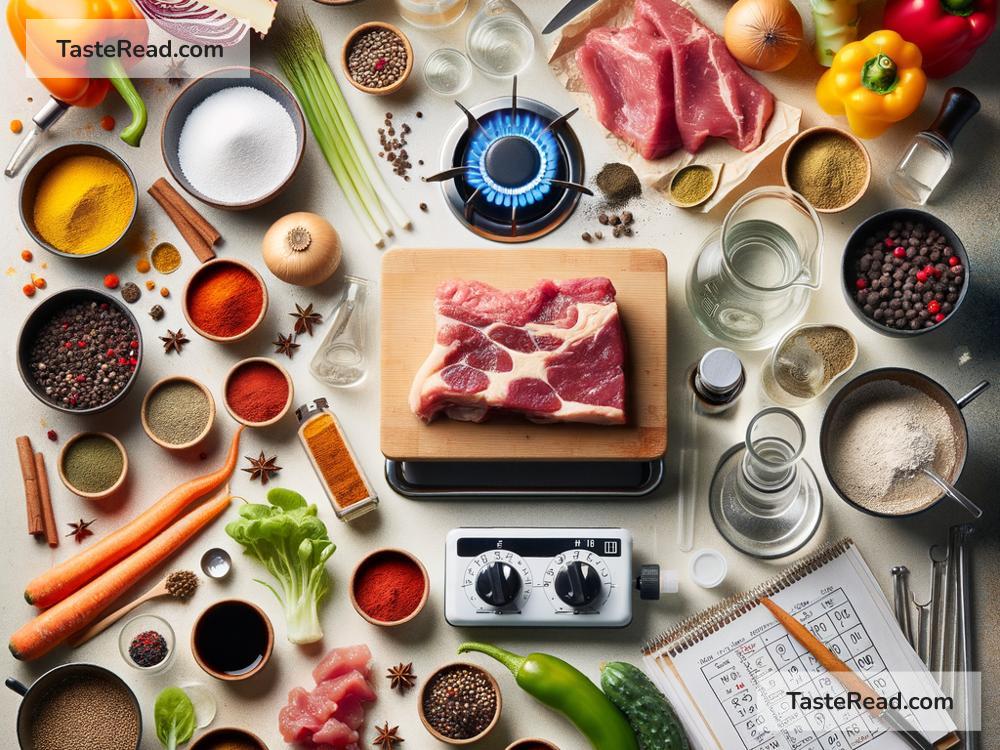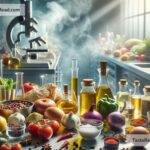The Science of Cooking with Chemical Fearlessness: Techniques and Tips
Cooking is an art, but it’s also a science. Behind every delicious meal is a series of chemical reactions that transform raw ingredients into flavorful dishes. Many people shy away from experimenting in the kitchen because they aren’t confident with the “science-y” parts—like understanding how heat, acid, or fat affect their ingredients. But with a little chemical fearlessness and some practical tips, you can gain confidence and up your cooking game. Let’s dive into the fascinating world of cooking science and how you can embrace it to create amazing meals.
What Is Chemical Fearlessness?
Chemical fearlessness means approaching cooking with curiosity and a willingness to experiment. It’s about understanding the basic science principles behind cooking techniques and using them to your advantage instead of being intimidated. Every time you mix ingredients, heat them, or season them, you’re causing chemical reactions. These reactions are predictable once you understand the general rules, and they can help you improve your results in the kitchen.
For example, why does stirring sugar into water make it sweeter? It’s simple chemistry—the sugar dissolves because water molecules break it down into smaller pieces. Why does meat become tender after hours of slow cooking? Again, chemistry is at play—heat breaks down tough connective tissues. Once you know these principles, you can experiment boldly without worrying about “messing up.”
Mastering Essential Cooking Techniques
Let’s explore some key scientific techniques in cooking that can transform the way you approach recipes.
1. Heat: The Ultimate Cooking Tool
Heat drives most cooking processes. It causes chemical changes that create flavor, texture, and aroma. There are three main types of heat transfer:
– Conduction (direct heat, like a hot pan)
– Convection (heated air or liquid, like in an oven or boiling water)
– Radiation (direct energy waves, like a broiler or grill)
Knowing how heat works allows you to control your cooking more effectively. For instance:
– Searing meat creates a golden crust because of the Maillard reaction (a reaction between amino acids and sugars under heat). This adds rich, savory flavors.
– Simmering soups at a lower temperature ensures ingredients soften without breaking apart or becoming mushy.
A tip for chemical fearlessness: Don’t be afraid to play with temperatures. Try high heat for quick cooking (like stir-frying) or low heat for slow-cooking (like a roast). You can even experiment with sous vide cooking, where food is vacuum-sealed and cooked at precise temperatures.
2. Emulsification: Mixing Oil and Water
Oil and water don’t naturally mix—it’s basic chemistry. Yet, emulsification makes it possible. This happens when you add something to stabilize the mixture, like mustard or egg yolks.
When you make mayonnaise, salad dressings, or aioli, you’re creating an emulsion. The key is adding the oil slowly and whisking constantly to trap tiny droplets within the water base.
Fearless tip: Experiment with different emulsifiers! Try yogurt or avocado instead of egg yolks for creamy dressings.
3. Acidity and Alkalinity: Balancing Flavors
The pH level of a dish can dramatically influence its flavor. Acids, like lemon juice or vinegar, brighten and sharpen flavors. Basic ingredients, like baking soda, can mellow harsh flavors or loosen tough tissues in foods.
Knowing how to use acidity and alkalinity is game-changing:
– Add a splash of vinegar or citrus to lift a bland dish.
– Use baking soda in marinades to tenderize meat faster.
Fearless tip: Don’t hesitate to taste and tweak. If a dish feels “flat,” add a touch of acid. But be careful—too much can overpower your flavors.
4. Caramelization: Sweet and Golden
Sugar reacts to heat by breaking down and turning golden brown, a process called caramelization. This is what gives baked goods their golden crust and roasted veggies their sweet, nutty flavor.
Fearless tip: Play with the caramelization process by experimenting with temperatures or sugar levels. For example, sprinkle a little sugar on carrots and roast them until they’re perfectly caramelized.
Practical Tips for Fearless Cooking
Now that you’re equipped with some scientific knowledge, here are tips to stay fearless in the kitchen:
-
Understand the Why: Read about cooking science for the techniques you’re using. Knowing why something works makes you more confident.
-
Start Small: Try simple experiments. Make an emulsified dressing or roast vegetables at different temperatures to see how their texture changes.
-
Use Your Senses: Chemical changes manifest in ways you can see, smell, and taste. Pay attention to how aromas intensify as food cooks and how textures transform.
-
Prepare for “Mistakes”: Don’t fear failure—mistakes are learning opportunities. If something doesn’t work, think about what might have gone wrong and try again.
-
Play with Ingredients: Swap acids, fats, or spices to explore new flavor profiles. Think of cooking as a science lab where the experiments are delicious!
Fearlessness Yields Flavorful Results
Cooking with chemical fearlessness means embracing the unknown and having fun with the science behind your food. Every time you tweak a recipe or try out a new technique, you’ll discover something new. Over time, you’ll build confidence and start cooking intuitively, without depending so much on step-by-step instructions.
Remember, you don’t need a degree in chemistry to experiment in the kitchen—just a bit of curiosity and willingness to explore. So next time you step into your kitchen, let go of fear, welcome science, and cook up something amazing!


